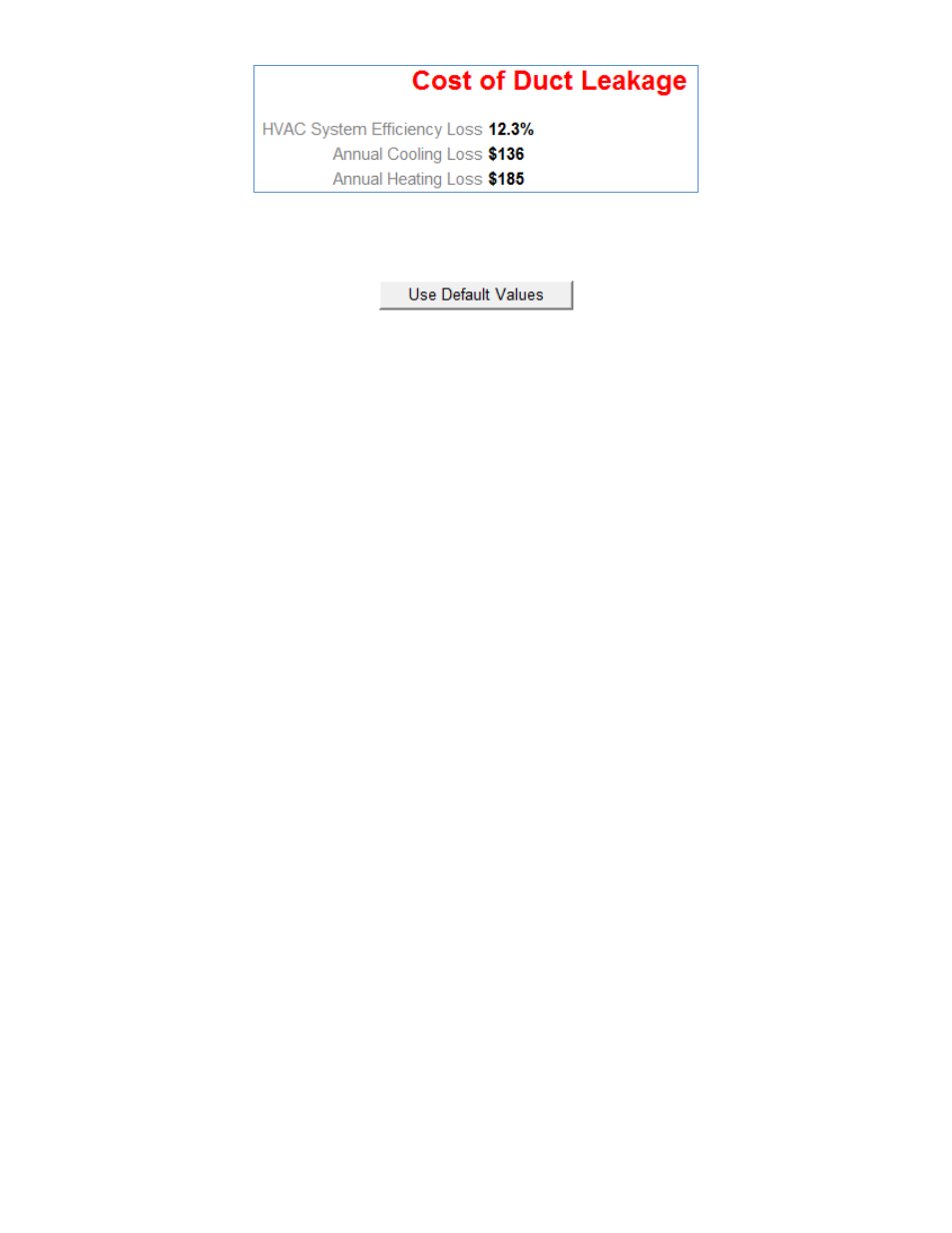Of duct leakage to outdoors, Annual cooling cost, Annual heating cost – Retrotec DucTester 200 Series Residential Applications User Manual
Page 51: Average duct operating pressure, Leakage split, Supply leakage penalty

Page 51 of 91
©Retrotec Inc. 2015
For further detail on Duct system loss parameter calculations, refer to section 10.
If you are unsure of what the values are, simply assume the default values by clicking the "Use Default
Values" button:
Note: The "Annual Cooling Loss" and "Annual Heating Loss" in the Duct Leakage Report are for
estimation purposes only.
7.8.1. % of Duct Leakage to Outdoors
Enter the estimated percentage of the Total Duct leakage that leads to outdoors in order to estimate
Cost of Duct Leakage. (Input is only required when performing a Total Duct Leakage test)
7.8.2. Annual Cooling Cost
Enter the cooling cost per year from the utility bill. This entry is used to estimate the cost of Duct
Leakage to Outdoors included in the cooling bill.
7.8.3. Annual Heating Cost
Enter heating cost per year from the utility bill. This entry is used to estimate the cost of Duct Leakage
to Outdoors included in the heating bill.
7.8.4. Average Duct Operating Pressure
Measure the pressure in the supply duct closest to the plenum and enter that pressure to get an
accurate calculation of duct losses. Do the same for the return. Using the test pressure (default value)
here will not be accurate.
7.8.5. Leakage Split
Enter the estimated fraction of the Total Duct Leakage that is on the supply side and the return side.
The default values are 0.5, meaning the leakage of the HVAC system is split evenly between the supply
and return. Adding the Leakage Split for the supply side and the return side together should always
come out to 1.0.
7.8.6. Supply Leakage Penalty
This is the estimated fraction of energy loss of the supply side. The default value is 1.0. This means that
of the supply air leakage, all of its energy is lost to the outdoors (i.e., none of its energy is returned back
into the house). This number can be lowered if some of the energy from duct leakage leads back into
the house. For example, if supply leaks are going into a wall cavity, some of the energy will be go back
into the house, so a lower leakage penalty would provide a better estimate of annual HVAC losses.
